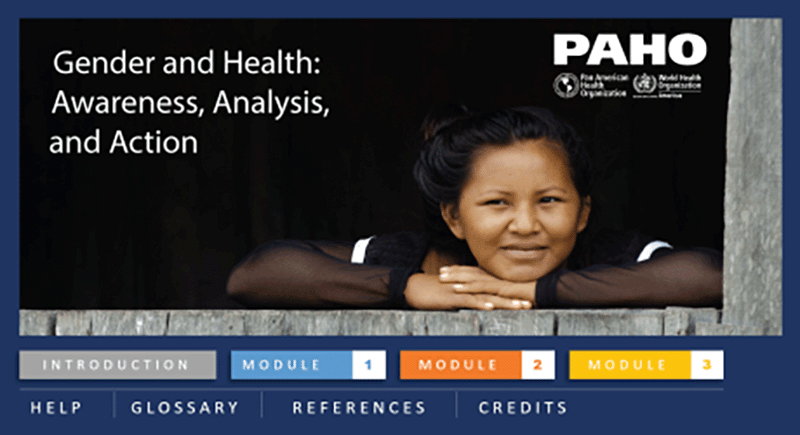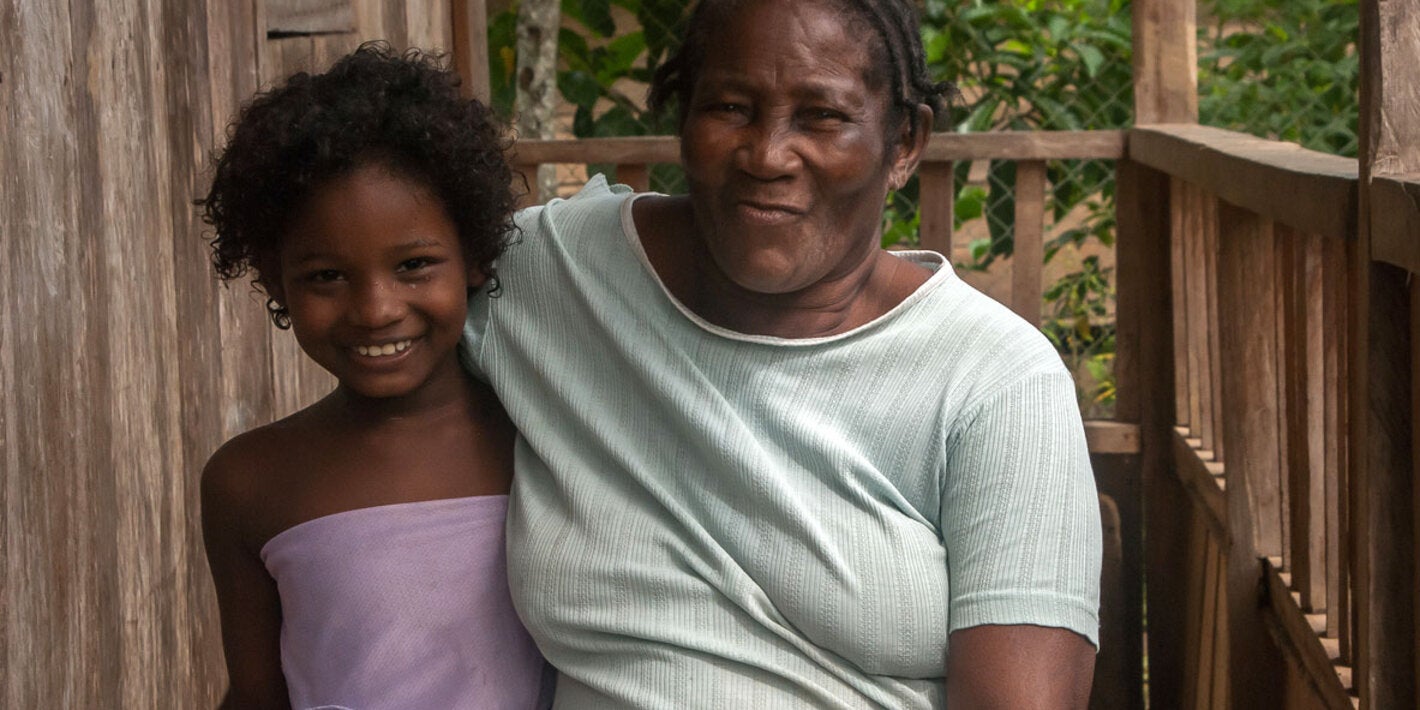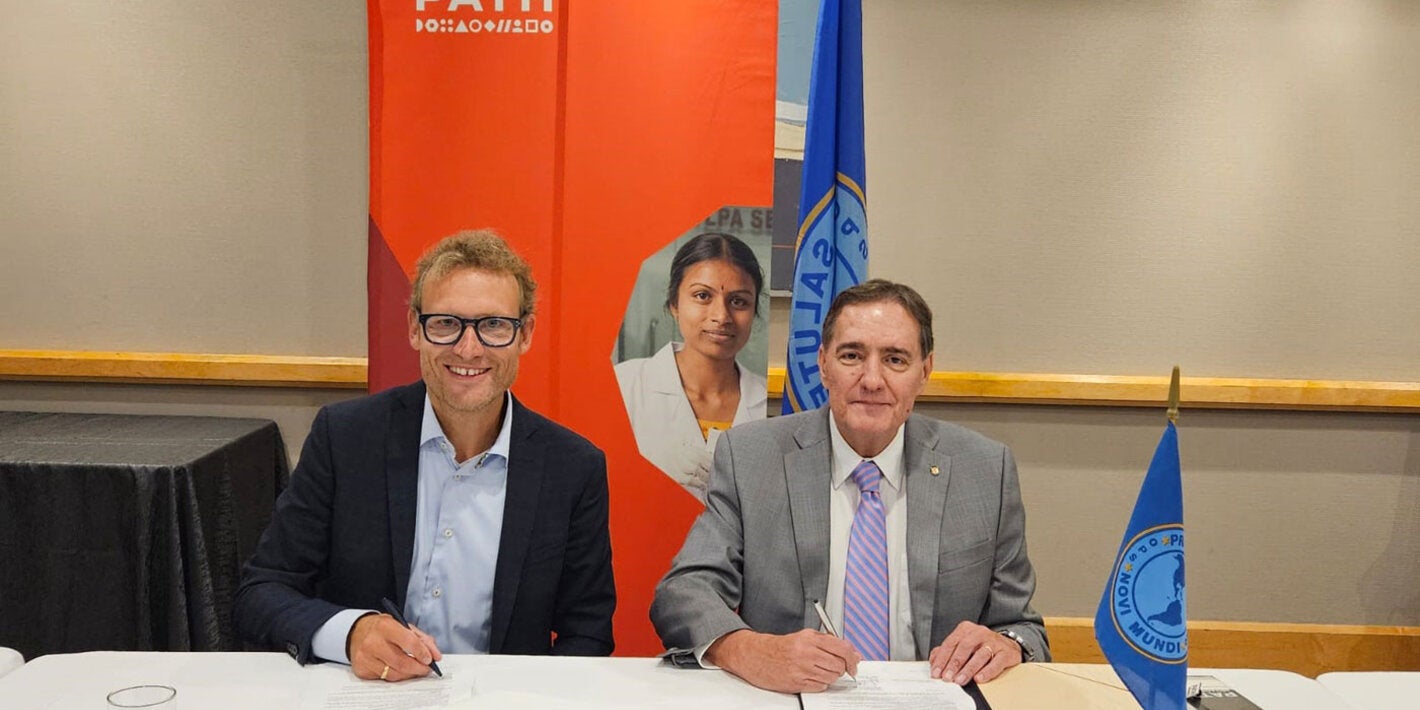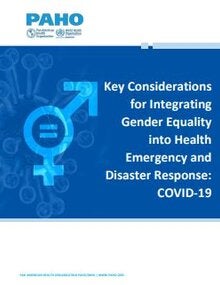Equality in health means that women and men have equal conditions for realizing their full rights and potential to be healthy, contribute to health development, and benefit from the results.
Gender equity means fairness and justice in the distribution of benefits, power, resources, and responsibilities between women and men.
Women and men have different needs, access to, and control over resources. These differences should be addressed in a manner that rectifies the imbalance between the sexes.
Achieving gender equality will require specific measures designed to eliminate gender inequities.
In the Region of the Americas, indigenous peoples, Afro-descendants, Roma, and members of other ethnic groups continue to experience structural discrimination, exclusion,
and inequality.
The invisibility and discrimination often experienced by these populations heighten their conditions of vulnerability.
These populations pose a challenge for meeting the targets of the health-related Sustainable Development Goals (SDGs), including those on universal access to health and universal health coverage, tuberculosis, malaria, and mental health, among others.
PAHO urges the Member States to consider the connection between ethnicity and health, and to promote an intercultural approach that will contribute, among other aspects, to the elimination of access barriers to health services and improve the health outcomes of indigenous peoples, Afro descendants, Roma, and members of other ethnic groups, as appropriate, considering their national contexts, priorities, and regulatory frameworks.
PAHO will provide technical cooperation to the Member States for the implementation of actions with an intercultural approach geared to the following priority lines:
- the production of evidence;
- the promotion of policy action;
- social participation and strategic partnerships;
- recognition of ancestral knowledge and traditional and complementary medicine; and
- capacity development at all levels.
PAHO Gender Equality Policy
This policy reflects PAHO's unwavering commitment to the principles of equity, respect for human rights, and the exercise of citizenship, as well as the willingness to actively join the global trend aimed at eliminating all forms of gender-based discrimination. It is also an expression of the institutional determination to strengthen the effectiveness and efficiency of public health practices in the Americas. The goal of this policy is to contribute to the achievement of gender equality in the state of health and health development, through research, policies and programmes that pay due attention to gender differences in health and their determinants, and actively promote equality between women and men. Download the PAHO/WHO Gender Equality Policy in pdf.
Guiding principles
Gender equality in health means that women and men are on an equal footing to fully exercise their rights and potential to be healthy, contribute to health development, and benefit from outcomes. Achieving gender equality requires concrete measures to eliminate gender inequities.
Gender equity means a fair distribution of benefits, power, resources, and responsibilities between women and men. The concept recognizes that there are differences between men and women in terms of health needs, access to and control over resources, and that these differences must be addressed in order to correct imbalances between men and women. Gender inequity in health refers to the unfair, unnecessary, and preventable inequalities that exist between women and men in the state of health, health care, and participation in health work. Gender equity strategies are used to ultimately achieve equality. Equity is the means, equality is the result.
Empowerment refers to the taking control by women and men over their lives; that is: the ability to distinguish options, make decisions, and put them into practice. It is a process, but it is also an outcome; it is collective and at the same time individual. Women's empowerment is essential to achieving gender equality. Others cannot empower women, only women can empower themselves. However, institutions can support empowerment processes at both the individual and collective levels.
The concept of diversity incorporated into the gender equality approach means recognizing that women and men are not homogeneous groups. In addressing gender and health issues, differences between women and men with respect to age, socio-economic status, education, ethnicity, culture, sexual orientation, disability, and geographical location should be taken into account.
The mainstreaming of the gender perspective is "...the process of assessing the impact on men and women of any planned action, including legislation, policies, and programmes, in any sector and at all levels. It is a strategy to make the problems and experiences of women and men an integral dimension of the design, implementation, monitoring, and evaluation of policies and programmes in all political, economic and social spheres, in such a way as not to perpetuate inequality. The ultimate goal is to achieve gender equality." A strategy to mainstream gender perspective may include affirmative initiatives targeting either women or men.












